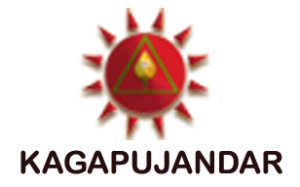Siddha Medicine / Kaayakalpam
The word ‘siddha’ comes from the root word ‘Siddhi’ which means ‘an object to be attained’ or ‘perfection’ or ‘heavenly bliss’. Siddhi generally refers to the eight supernatural powers enumerated as ‘anima’ and those who have attained them are called ‘siddhars’ and also called them as Divine Scientists the Siddha system. These worshipful Tamil siddhars using their divine powers had classified 4,448 diseases and prescribed medicines with real therapeutic value in the form of herbs, roots, salts and even toxicity reduced poisons to treat rare array of diseases that attack human beings.

Guru Medicine
Once it was practised from Lemoria to mediterranean sea and subsequently is practised in Southern India. The origin of the Tamil language is attributed to the sage Agasthya and the origin of Siddha medicine is also attributed to him. Before the Aryan occupation of the Sind region and the Gangetic plain there existed in the southern India, on the banks of the river Kavery, and Tamirapani, a civilization which was highly organised. This civilization has a system of medicine to deal with problems of sanitation and treatment of diseases. This is the Siddha system of medicine. It is possible that in the course of time this system and the one prevalent in the north supplemented and enriched each other. The therapeutics of Siddha medicines consists mainly of the use of metals and minerals whereas in the earlier Ayurveda texts there is no mention of metals and minerals. From earliest times in Siddha text, there is mention of mercury, sulphur, copper, arsenic and gold used as therapeutic agents. The Tridosha theory, sapta dhatu physiology and nomenclature of the diseases in the two systems may seem similar. According to Siddha medicine AIDS has been written by the Tamil Siddhars as far back as few thousand years during the ancient prehistoric civilisation of Southern India. Traditionally, it is said there were 18 Siddhars. They left their imprint not only in medicine but in yoga and philosophy. The Siddhars were essentially yogis and secondarily physicians.
Fundamental Principles Of Siddha Medicine / Kaayakalpam
The universe consists of two essential entities, matter and energy. The Siddhars call them Siva (male) and Shakti (female, creation). Matter cannot exist without energy inherent in it and vice versa. The two co-exist and are inseparable. They are the primordial elements Bhutas, not to be confused with modern chemistry. Their names are Munn (solid), Neer (fluid), Thee (radiance), Vayu (gas) and Veli (ether). These five elements (Bhutas) are present in every substance, but in different proportions. Earth, water, fire, air and ether are manifestations of these 5 elements. The human anatomy and physiology, causative factor of diseases, the materials for the treatment and cure of the diseases, the foods for the sustenance of the body, all fall within the five elemental categories. The human being is made up of these five elements, in different combinations. The physiological function in the body is mediated by three substances (dravayas), which are made up of the five elements. They are Vali, Azhal, and Iyam. In each and every cell of the body these three doshas co-exist and function harmoniously. The tissues are called dhatus. Vali is formed by Akasa and Vayu. Vali controls the nervous actions such as movement, sensation, etc. Azhal is formed by Thee and controls the metabolic activity of the body, digestion, assimilation, warmth, etc. Iyam is formed by Munn and Neer and controls stability. When their equilibrium is upsets disease sets in. In addition to the influence of the Mukkuttram the seasons also affects body constituents as evident in northern and southern India.

